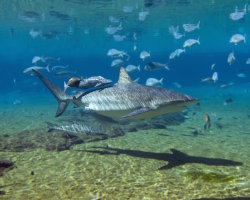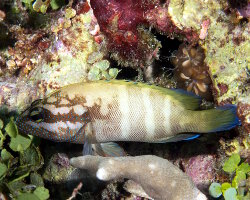Sealife guideThe brownbanded bamboo sharkChiloscyllium punctatum
Last updated on 02/10/2025 at 09:06 PM
Taxonomy
- Common name: Brownbanded bamboo shark, brown spotted catshark
- French name: Requin chabot bambou
- Spanish name: Bamboa estriada
- Scientific name: Chiloscyllium punctatum (Müller & Henle, 1838)
- Family name: Hemiscylliidae
- Order name: Orectolobiformes
- Class name: Elasmobranchii
Description
The brownbanded bamboo shark has a morphology adapted to its benthic lifestyle. It has an elongated, cylindrical body with a relatively wide head and a blunt snout equipped with barbels. Its pectoral fins are wide and well-developed, allowing it to move slowly but efficiently along the seafloor in search of food.

The brownbanded bamboo shark is easily recognizable due to the alternating broad brown-black and off-white bands ©
Insos Kampung |
Dreamstime.comThis shark is easily recognizable by the alternating broad brown-black and off-white bands, resembling a convict, which provides effective camouflage among rocks and corals.
The brownbanded bamboo shark is a medium-sized shark, typically ranging from 24 to 30 inches in length as an adult, with a maximum size of 40.9 inches. Females are smaller than males in size.
Geographic range
The brownbanded bamboo shark frequents the warm waters of the Indo-Pacific region and is commonly observed in the waters of South Asia, from Malaysia to Northern Australia, and sometimes in the waters of the Philippines and Thailand.
Habitat
The brownbanded bamboo shark is a benthic species that spends most of its life near the seafloor. It is mainly found in shallow waters of coral reefs, coastal lagoons, and sandy or rocky areas at depths not exceeding 164 feet.
It is known for its nocturnal behavior, hunting primarily at night.
Due to its slow movement, it uses its camouflage abilities to blend with the seafloor, reducing the risk of being spotted by predators and needing to burrow.
Diet
The brownbanded bamboo shark primarily feeds on small fish,
crustaceans and benthic invertebrates such as crabs, shrimp and
marine worms. Camouflaged in its environment, resting on the seafloor, the brownbanded bamboo shark is a discreet predator that captures its prey by surprise. Additionally, thanks to its filtering and digging abilities in the marine substrate, it can locate its hidden prey.
Reproduction
The brownbanded bamboo shark is an
oviparous shark species, with females laying their eggs, which they most often deposit in crevices or cavities found on the seafloor. Each egg is enclosed in a capsule, called a « mermaid's purse », offering protection against external conditions.

The brownbanded bamboo shark (Chiloscyllium punctatum) © Rickard Zerpe sous licence
Creative CommonsAfter several months of development, the young sharks emerge from their capsule and although they are already capable of swimming and feeding, they remain vulnerable to predators during the first few weeks of their life.
Within the same family
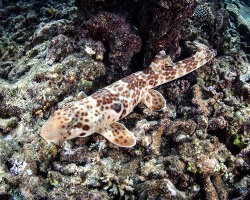
Raja epaulette shark
(Hemiscyllium freycineti)
Discover also
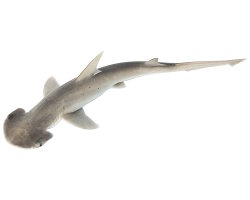
Bonnethead shark
(Sphyrna tiburo)
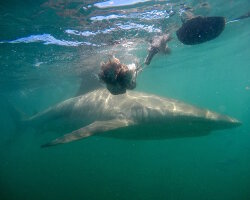
Copper shark
(Carcharhinus brachyurus)
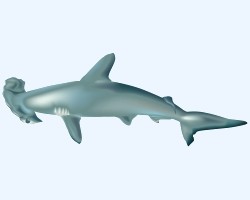
Hammerhead shark
(9 espèces)
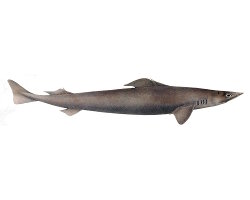
Leafscale gulper shark
(Centrophorus squamosus)
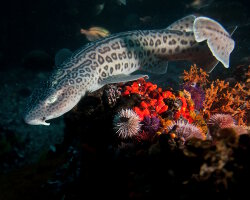
Leopard catshark
(Poroderma pantherinum)
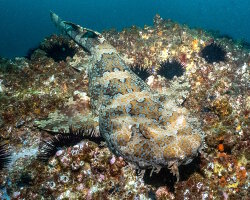
Ornate wobbegong
(Orectolobus ornatus)
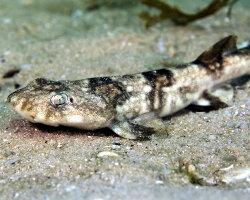
Puffadder shyshark
(Haploblepharus edwardsii)
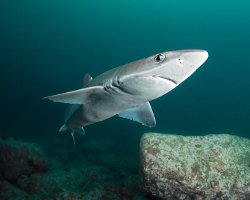
Spiny dogfish
(Squalus acanthias)
The marine species from Indo-Pacific
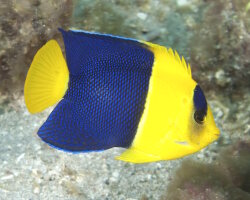
Bicolor angelfish
(Centropyge bicolor)
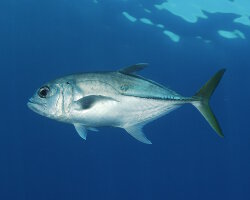
Bigeye trevally
(Caranx sexfasciatus)

Blue tunicate
(Rhopalaea fusca)
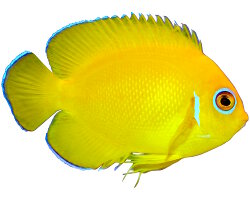
Lemonpeel angelfish
(Centropyge flavissima)
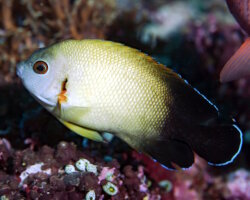
Pearl-scaled angelfish
(Centropyge vrolikii)
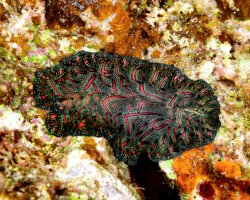
Persian carpet flatworm
(Pseudobiceros bedfordi)

Thornback cowfish
(Lactoria fornasini)




















